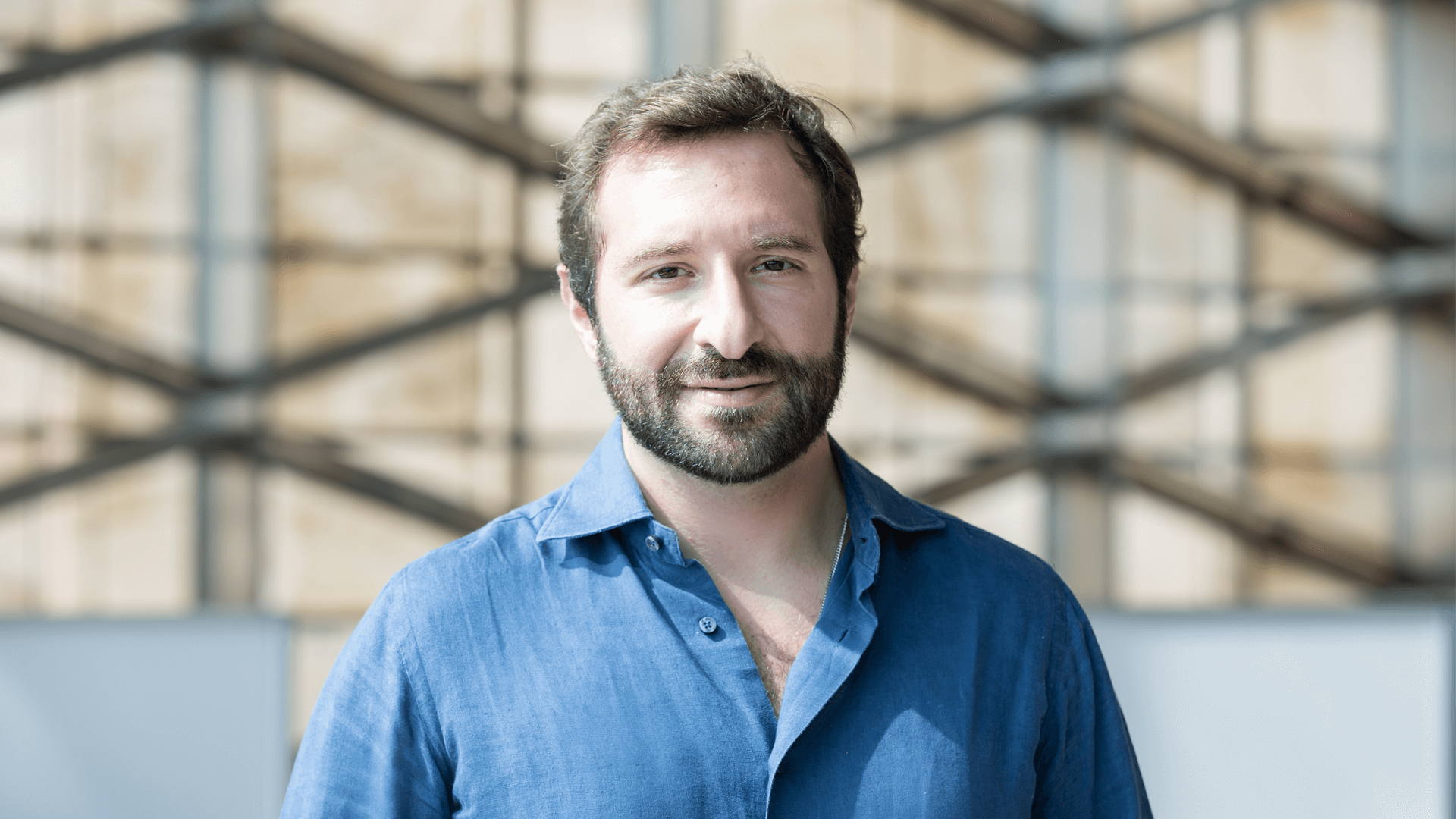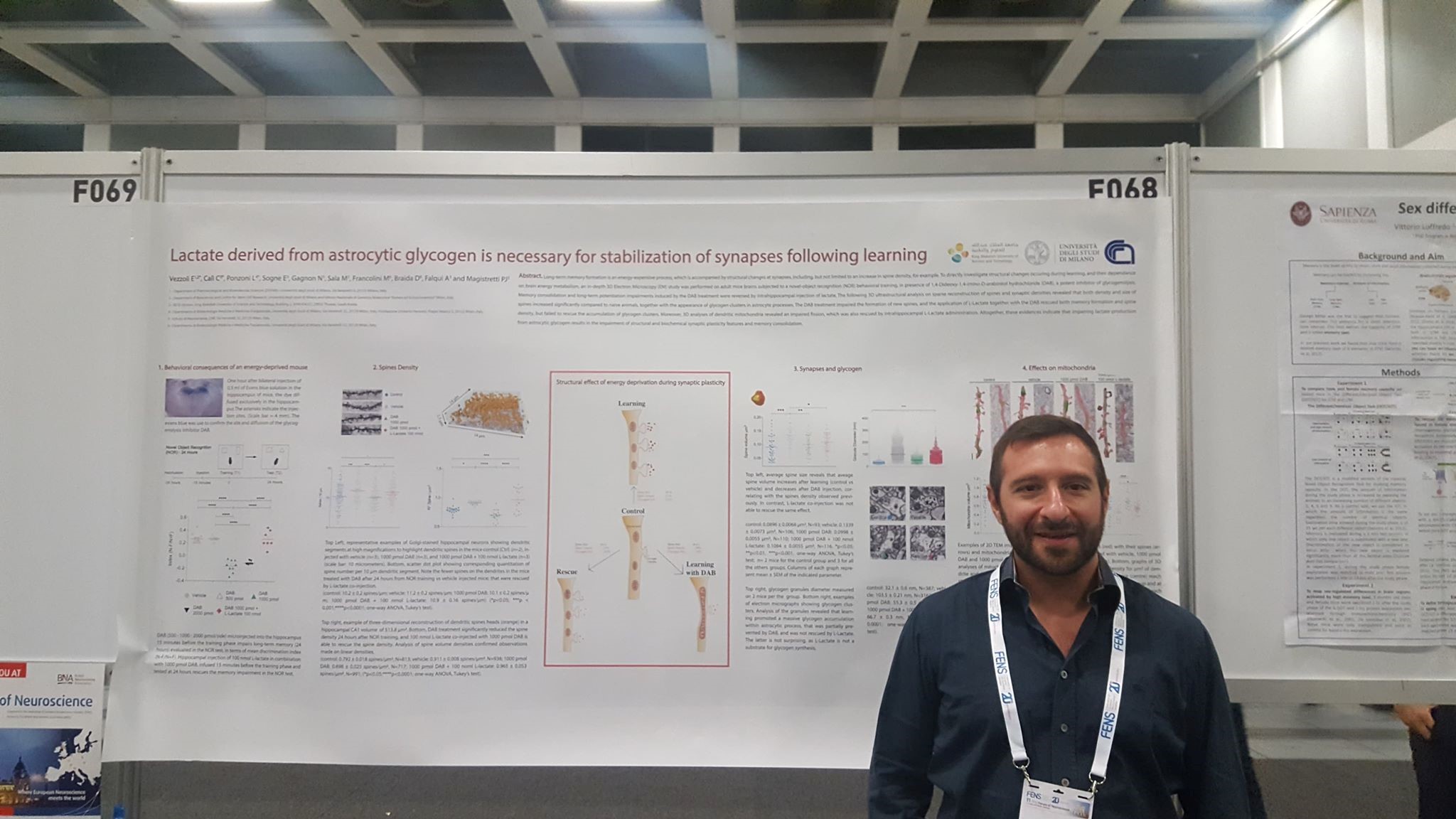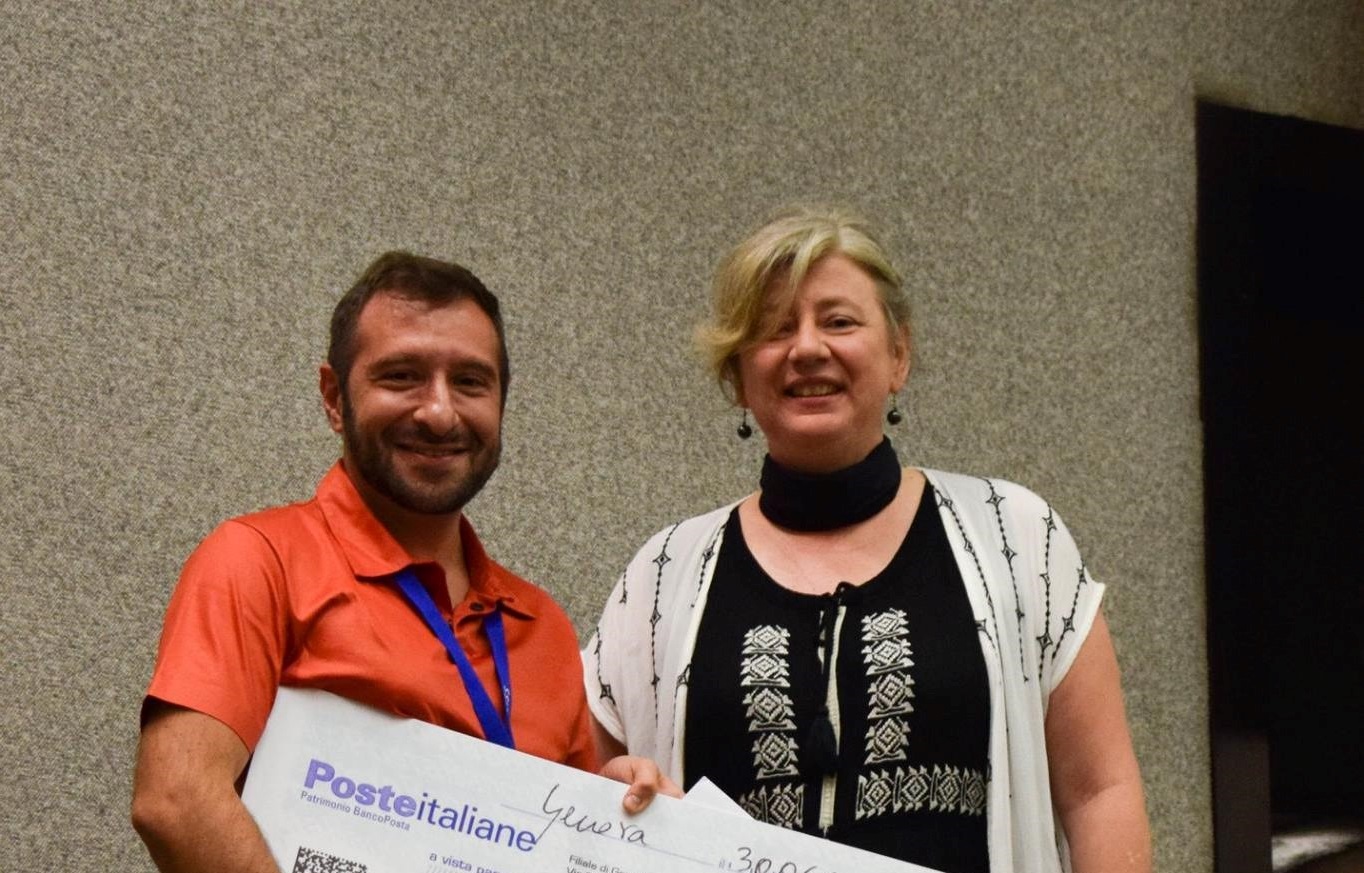KAUST researcher Corrado Calì awarded at Italian neuroscience conference

Dr. Corrado Calì, a KAUST researcher, won an award in Italy in June at the Brainstorming Research Assembly for Young Neuroscientists (BraYn). Photo by Sarah Munshi.
By David Murphy, KAUST News
KAUST researcher Dr. Corrado Calì recently won an award at the Brainstorming Research Assembly for Young Neuroscientists (BraYn) held in Genoa, Italy, from June 29 to 30. The BraYn meeting was created with the goal of attracting young researchers (under the age of 40) from different laboratories from Italy, Europe and abroad to come together to share their knowledge and skills and forge collaborative ties between different institutions and research groups.
Calì, who is a research scientist in Dean Pierre Magistretti's Laboratory of Cellular Imaging and Energetics at KAUST, won an award for a talk based on his current research on how the modulation of glycogen can enhance or prevent the stabilization of synapses, which play a key role in mechanisms of memory.
"I presented work—part of a project in collaboration with KAUST Professor Andrea Falqui and Dr. Elena Vezzoli from the University of Milan—where we investigate the involvement of the lactate shuttle discovered by Professor Magistretti a few years ago in structural synaptic plasticity," Calì said.
"One of the [conference] sponsors was the Italian Association for the Development of Talent and Surplus (AISTAP). The association is intended to promote initiatives for especially talented young students at all undergrad ages to develop their talents in all technical and scientific fields. For this reason, they chose to reward our work that is aimed to investigate brain plasticity...In a wider sense, [this] is what allows us to learn and makes us smart," he added.

KAUST researcher Dr. Corrado Calì works as part of the University's Dean Pierre Magistretti's lab. He won an award in June for his work at the Brainstorming Research Assembly for Young Neuroscientists (BraYn) in Italy. Image courtesy of Corrado Calì.
Computing the brain
Calì and his KAUST colleagues, in collaboration with the Blue Brain Project (based in Switzerland) as part of the Human Brain Project consortium, are working at the interface between computer science and neuroenergetics. Their aim is to produce a computer simulation of the coupling between astrocytes—the cells of the brain that support the metabolism of the brain—and neurons.
"We are very proud of being pioneers in the use of 3-D full immersion virtual reality (VR) to investigate the morphologies of brain cells at the nanoscale, and we have already several publications in this field in collaboration with the KAUST Visual Computing Center and with [our] colleague Marco Agus, [who is] working with Professor Markus Hadwiger," Calì said.
"The team in Switzerland is working on the mathematical modeling of this system, whereas at KAUST we produce the three-dimensional morphological models of the astrocytes," he added.
Two big research directions
Calì, who joined Magistretti's KAUST lab in 2013, trained as a neuroscientist in Lausanne, Switzerland, where he obtained his Ph.D. in neuroscience in 2012. Before this, he received his master's degree in biomedical engineering from the Politecnico di Torino, Italy. He describes himself as someone who works within the field of biology but retains great interest in technology and microscopy. Calì feels that his and the broader interdisciplinary team's research currently has two large research directions.

KAUST researcher Dr. Corrado Calì (left) is pictured here winning his award in June at the Brainstorming Research Assembly for Young Neuroscientists (BraYn) in Italy. Image courtesy of Corrado Calì.
"From a purely neurobiological point of view, the investigation of the astrocytic morphology and the distribution of the organelles responsible for energy production and delivery, such as glycogen and mitochondria, is our main focus," he said.
"On the other hand, we're really excited about the development of new tools for reconstruction and qualitative/quantitative analysis—the use of VR, in particular, has been on our agenda since joining KAUST. Also, more and more scientists are interested in collaborating with us thanks to our unique approach, [which] we really believe is the future of neuroanatomy," Calì concluded.
Related stories:
-
Dr. Roberto Arrigoni awarded Benazzi Lentati prize
-
Dr. J. K. Vijayakumar elected to International Association of University Libraries board of directors
-
Saudi students win medals at IChO 2018
- Dr. Youssef Belmabkhout honored by ASRT
-
Ph.D. student elected to IEEE's Next Generation Magneticans Advisory Board

